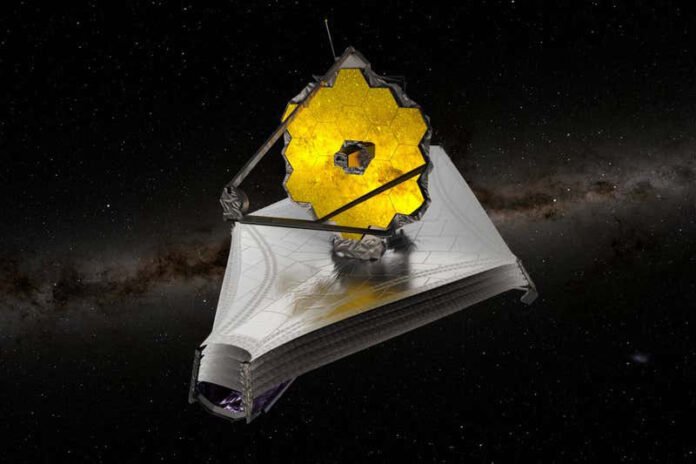All those of you following the James Webb Space Telescope (JWST) can breathe another sigh of relief; the spacecraft has safely arrived at its final destination almost a million miles from Earth.
Just shy of a month after its flawless launch from Kourou, French Guiana, the spacecraft’s thrusters were fired for about five minutes on January 24, placing the JWST into its final orbit at Lagrange Point 2.
The second of five known gravitational sweet-spots has been chosen as the optimal point for viewing out into space. Gravitational forces allow the telescope to stay in position with minimal thruster burn, helping conserve fuel, and L2 crucially faces away from the sun, helping maintain the extreme temperatures required for the infrared hardware to function.
🏠 Home, home on Lagrange! We successfully completed our burn to start #NASAWebb on its orbit of the 2nd Lagrange point (L2), about a million miles (1.5 million km) from Earth. It will orbit the Sun, in line with Earth, as it orbits L2. https://t.co/bsIU3vccAj #UnfoldTheUniverse pic.twitter.com/WDhuANEP5h
— NASA Webb Telescope (@NASAWebb) January 24, 2022
“We’re one step closer to uncovering the mysteries of the universe,” said NASA administrator, Bill Nelson. “I can’t wait to see Webb’s first new views of the universe this summer!”
Despite the milestone, a raft of additional hurdles awaits. Following a week-long cool down, it will take engineers approximately three months to align the 18 hexagonal segments that form the telescope’s primary mirror. The precision of the work almost defies belief – each mirror must align to within one five-thousandth the width of a human hair – and complete instrument calibration isn’t expected to be completed until the summer.
Once fully operational, the $10 billion successor to the Hubble space telescope is tasked with observing some of the oldest and most distant objects in the universe.
As fascinated as we are? Follow JWST’s journey at jwst.nasa.gov.


